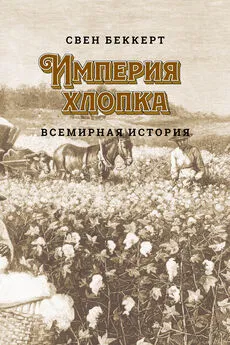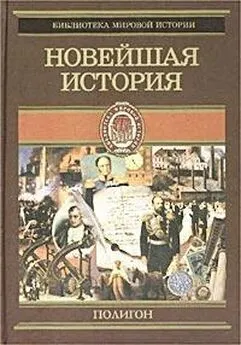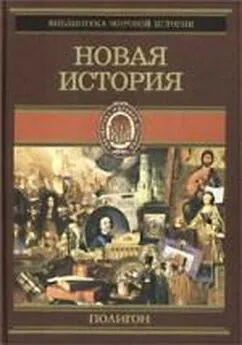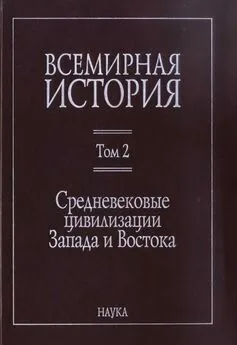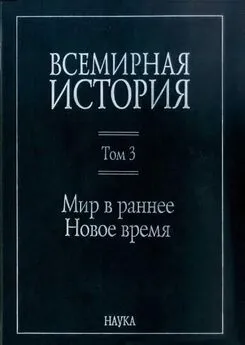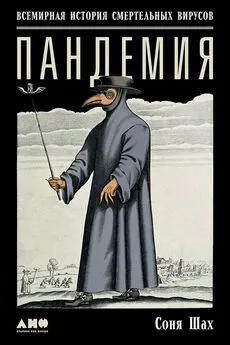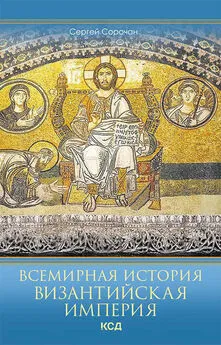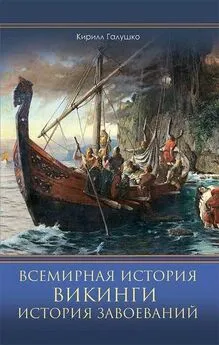Свен Беккерт - Империя хлопка. Всемирная история
- Название:Империя хлопка. Всемирная история
- Автор:
- Жанр:
- Издательство:неизвестно
- Год:неизвестен
- ISBN:978-5-93255-528-6
- Рейтинг:
- Избранное:Добавить в избранное
-
Отзывы:
-
Ваша оценка:
Свен Беккерт - Империя хлопка. Всемирная история краткое содержание
Империя хлопка. Всемирная история - читать онлайн бесплатно ознакомительный отрывок
Интервал:
Закладка:
51
Smith and Hirth, “Development of Prehispanic Cotton-Spinning,” 349; Angela Lakwete, Inventing the Cotton Gin: Machine and Myth in Antebellum America (Baltimore: John Hopkins University Press, 2005), 11–12; Mazzaoui, Italian Cotton , 74–82, 89; Smith and Hirth, “Development of Prehispanic Cotton-Spinning,” 354–55; John H. A. Munro, Textiles, Towns and Trade: Essays in the Economic History of Late-Medieval England and the Low Countries (Brookfield, VT: Variorum, 1994), 8, 15; Maureen Fennell Mazzaoui, “The Cotton Industry of Northern Italy in the Late Middle Ages, 1150–1450,” Journal of Economic History 32 (1972): 274.
52
Alan L. Olmstead and Paul W. Rhode, Creating Abundance: Biological Innovation and American Agricultural Development (New York: Cambridge University Press, 2008), 108–9; John Hebron Moore, “Cotton Breeding in the Old South,” Agricultural History 30, no. 3 (July 1956): 95–104; John Hebron Moore, Agriculture in Ante-Bellum Mississippi (New York: Bookman Associates, 1958), 13–36, 97; Lewis Cecil Gray, History ofAgriculture in the Southern United States to 1860 , vol. 2 (Washington, DC: Carnegie Institution of Washington, 1933), 689– 90; James Lawrence Watkins, King Cotton: A Historical and Statistical Review, 1790 to 1908 (New York: J. L. Watkins, 1908), 13; Bassett, Peasant Cotton , 33; Mazzaoui, Italian Cotton , 20–21; Bulliet, Cotton, Climate, and Camels , 40; Chaudhuri, “Organisation,” 75.
53
Mahatma Gandhi, The Indian Cotton Textile Industry: Its Past, Present and Future (Calcutta: G. N. Mitra, 1930), 6.
54
Цит. по: Henry Lee, The Vegetable Lamb of Tartary: A Curious Fable of the Cotton Plant (London: Sampson Low, Marston, Searle, & Rivington, 1887), 5.
55
Mann, Cotton Trade , 5; Oppel, Die Baumwolle , 39; см.: экспонаты в Museu Textil i d’Indumentaria, Barcelona, Spain.
56
То, что крестоносцы играли решающую роль в представлении отрасли хлопкового текстиля в Европе, подтверждается Baumwolle , словарной единицей в Lexikon des Mittelalters , vol. 1 (Munich: Artemis Verlag, 1980), 1670.
57
Alfred P. Wadsworth and Julia De Lacy Mann, The Cotton Trade and Industrial Lancashire, 1600–1780 (Manchester: Manchester University Press, 1931), 15; Mazzaoui, “Cotton Industry,” 263; Ashtor, “Venetian Cotton,” 677.
58
На протяжении двенадцатого века производство хлопка возникло в таких местах, как южная Франция, Каталония, и, наиболее заметно, в Северной Италии. См.: Mazzaoui, “Cotton Industry,” 268; Wescher, “Die Baumwolle,” 1643, 1644; Mazzaoui, Italian Cotton , 114.
59
Mazzaoui, Italian Cotton , 64, 66, 69; Mazzaoui, “Cotton Industry,” 271, 273, 276; Wescher, “Die Baumwolle,” 1643.
60
Mazzaoui, Italian Cotton , 7, 29, 63; Mazzaoui, “Cotton Industry,” 265.
61
Mazzaoui, Italian Cotton , 53; Ashtor, “Venetian Cotton,” 675, 697; Mazzaoui, Italian Cotton , 35; Ashtor, “Venetian Cotton,” 676.
62
Mazzaoui, Italian Cotton , 65–66, 74–82; Angela Lakwete, Inventing the Cotton Gin: Machine and Myth in Antebellum America (Baltimore: John Hopkins University Press, 2005), 11–12; Mazzaoui, Italian Cotton , 74–82, 89; Mazzaoui, “Cotton Industry,” 274, 275; Bohnsack, Spinnen und Weben , 65–66, 37, 63, 67, 114, 115; см.: Karl-Heinz Ludwig, “Spinnen im Mittelalter unter besonderer Berucksichtigung der Arbeiten‚ cum rota,” Technikgeschichte 57 (1990): 78; Eric Broudy, The Book ofLooms: A History of the Handloomfrom Ancient Times to the Present (Hanover, NH: Brown University Press, 1979), 102; Munro, Textiles , 8, 15.
63
Mazzaoui, Italian Cotton , xi, 29.
64
Mazzaoui, Italian Cotton , 139, 144, 150, 152; Mazzaoui, “Cotton Industry,” 282, 284; Von Stromer, Die Grundung , 84–86; Eugen Nubling, Ulms Baumwollweberei im Mittelalter (Leipzig: Duncker & Humblot, 1890), 146.
65
Von Stromer, Die Grundung , 32; Goetz Freiherr von Poelnitz, Die Fugger (Tubingen: J. C. B. Mohr, 1981); Richard Ehrenberg, Capital and Finance in the Age of the Renaissance: A Study of the Fuggers and Their Connections , trans. H. M. Lucas (New York: Harcourt, 1928).
66
Von Stromer, Die Grundung , 1, 2, 8, 21, 128, 139, 148; Nubling, Ulms Baumwollwebe-rei , 141; Bohnsack, Spinnen und Weben , 152.
67
Mazzaoui, Italian Cotton , 141; Von Stromer, Die Grundung , 88.
68
Mazzaoui, Italian Cotton , 55, 54, 154; Wadsworth and Mann, Cotton Trade , 23; Inalcik, “Ottoman State,” 365; Daniel Goffman, “Izmir: From Village to Colonial Port City,” in Edhem Eldem, Daniel Goffman, and Bruce Masters, eds., The Ottoman City Between East and West: Aleppo, Izmir, and Istanbul (Cambridge: Cambridge University Press, 1999), 79–134.
69
Nubling, Ulms Baumwollweberei , 166.
70
Я употребляю здесь термин «сеть» вместо «система» или «мировая система», так как хочу подчеркнуть неослабевающее значение локального распределения общественных, экономических и политических сил в формировании характера связей между различными частями мира. Эта идея возникла у меня под влиянием Gil J. Stein, Rethinking World-Systems: Diasporas, Colonies, and Interaction in Uruk Mesopotamia (Tucson: University of Arizona Press, 1999), 171.
71
Om Prakash, The New Cambridge History ofIndia vol. 2, European Commercial Enterprise in Pre-Colonial India , (Cambridge: Cambridge University Press, 1998), 23; Surendra Gopal, Commerce and Crafts in Gujarat, 16th and 17th Centuries: A Study in the Impact ofEuropean Expansion on Precapitalist Economy (New Delhi: People’s Publishing House, 1975), 10–11, 18, 26, 28, 58.
72
Celine Cousquer, Nantes: Une capitalefrançaise des Indiennes au XVIIIe siècle (Nantes: Coiffard Editions, 2002), 17.
73
Arasaratnam, “Weavers, Merchants and Company:” The Handloom Industry in Southeastern India, 1750–90,” in Tirthankar Roy, ed., Cloth and Commerce: Textiles in Colonial India (Walnut Creek, CA: AltaMira Press, 1996), 90; James Mann, The Cotton Trade of Great Britain (London: Simpkin, Marshall & Cº, 1860), 2; Walter R. Cassels, Cotton: An Account of Its Culture in the Bombay Presidency (Bombay: Bombay Education Society’s Press, 1862), 77; Beverly Lemire, Fashion’s Favourite: The Cotton Trade and the Consumer in Britain, 1660–1800 (Oxford: Pasold Research Fund, 1991), 15; Hameeda Hossain, The Company Weavers of Bengal: The East India Company and the Organization of Textile Production in Bengal, 1750–1813 (Delhi: Oxford University Press, 1988), 65; Proceeding, Bombay Castle, November 10, 1776, in Bombay Commercial Proceedings, P/414, 47, Oriental and India Office Collections, British Library, London; Stephen Broadberry and Bishnupriya Gupta, “Cotton Textiles and the Great Divergence: Lancashire, India and Shifting Competitive Advantage, 1600–1850,” CEPR Discussion Paper No. 5183, London, Centre for Economic Policy Research, August 2005, Table 3, p. 32; Daniel Defoe and John McVeagh, A Review of the State of the British Nation , vol. 4, 1707–08 (London: Pickering & Chatto, 2006), 606.
74
См., например: Factory Records, Dacca, 1779, Record Group G 15, col. 21 (1779), in Oriental and India Office Collections, British Library, London; John Irwin and P. R. Schwartz, Studies in Indo-European Textile History (Ahmedabad, 1966).
75
K. N. Chaudhuri, “European Trade with India,” in The Cambridge Economic History of India , vol. 1, c. 1200–c. 1750 (Cambridge: Cambridge University Press, 1982), 405–6; Arasaratnam, “Weavers, Merchants and Company,” 92, 94; см., например: Copy of the Petition of Dadabo Monackjee, Contractor for the Investment anno 1779, in Factory Records, G 36 (Surat), 58, Oriental and India Office Collections, British Library, London; Cousquer, Nantes , 31.
76
Hameeda Hossain, “The Alienation of Weavers: Impact of the Conflict Between the Revenue and Commercial Interests of the East India Company, 1750–1800,” in Roy, ed., Cloth and Commerce , 119, 117; Atul Chandra Pradhan, “British Trade in Cotton Goods and the Decline of the Cotton Industry in Orissa,” in Nihar Ranjan Patnaik, ed., Economic History of Orissa (New Delhi: Indus Publishing Co., 1997), 244; Arasaratnam, “Weavers, Merchants and Company,” 90; Shantha Hariharan, Cotton Textiles and Corporate Buyers in Cottonopolis: A Study of Purchases and Prices in Gujarat, 1600–1800 (Delhi: Manak Publications, 2002), 49.
77
Memorandum of the Method of Providing Cloth at Dacca, 1676, in in Factory Records, Miscellaneous, vol. 26, Oriental and India Office Collections, British Library, London.
78
Minutes of the Commercial Proceedings at Bombay Castle, April 15, 1800, in Minutes of Commercial Proceedings at Bombay Castle from April 15, 1800 to 31st December 1800, in Bombay Commercial Proceedings, P/414, Box 66, India Office Library, British Library, London; Copy of the Petition of Dadabo Monackjee, 1779, Factory Records Surat, 1780, Box 58, record G 36 (Surat), Oriental and India Office Collections, British Library, London; Report of John Taylor on the Cotton Textiles of Dacca, Home Miscellaneous Series, 456, p. 91, India Office Library, British Library, London; Lakshmi Subramanian, Indigenous Capital and Imperial Expansion: Bombay, Surat and the West Coast (Delhi: Oxford University Press, 1996), 15.
79
John Styles, “What Were Cottons for in the Early Industrial Revolution?” in Giorgio Riello and Prasannan Parthasarathi, eds., The Spinning World: A Global History of Cotton Textiles, 1200–1850 (New York: Oxford University Press, 2009), 307–26. Halil Inalcik, “The Ottoman State: Economy and Society, 1300–1600,” in Halil Inalcik and Donald Quataert, eds., An Economic and Social History of the Ottoman Empire, 1300–1914 (Cambridge: Cambridge University Press, 1994), 354; Pedro Machado, “Awash in a Sea of Cloth: Gujarat, Africa and the Western Indian Ocean Trade, 1300–1800,” in Riello and Parthasarasi, The Spinning World , 169; Subramanian, Indigenous Capital , 4.
Читать дальшеИнтервал:
Закладка:
